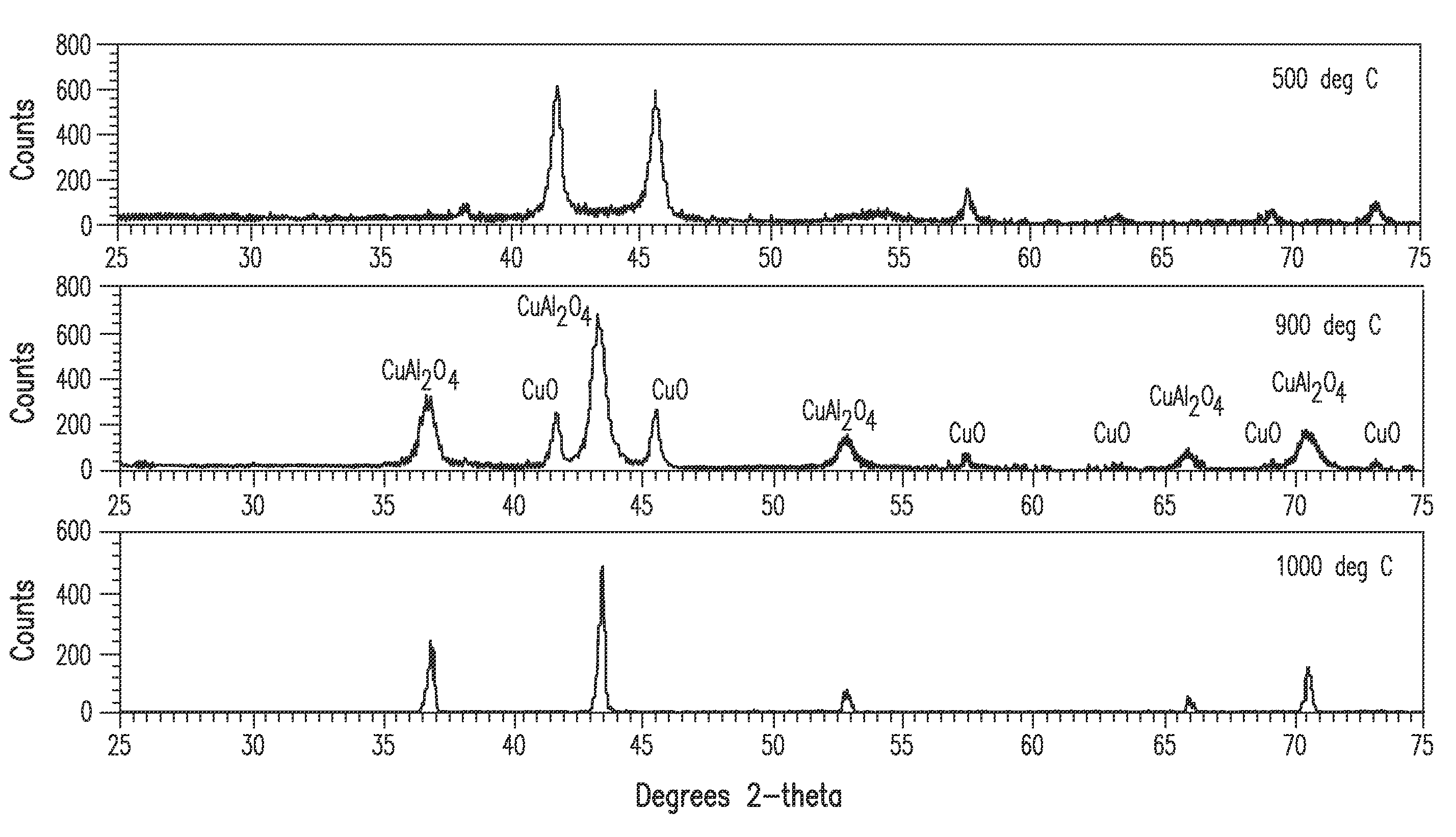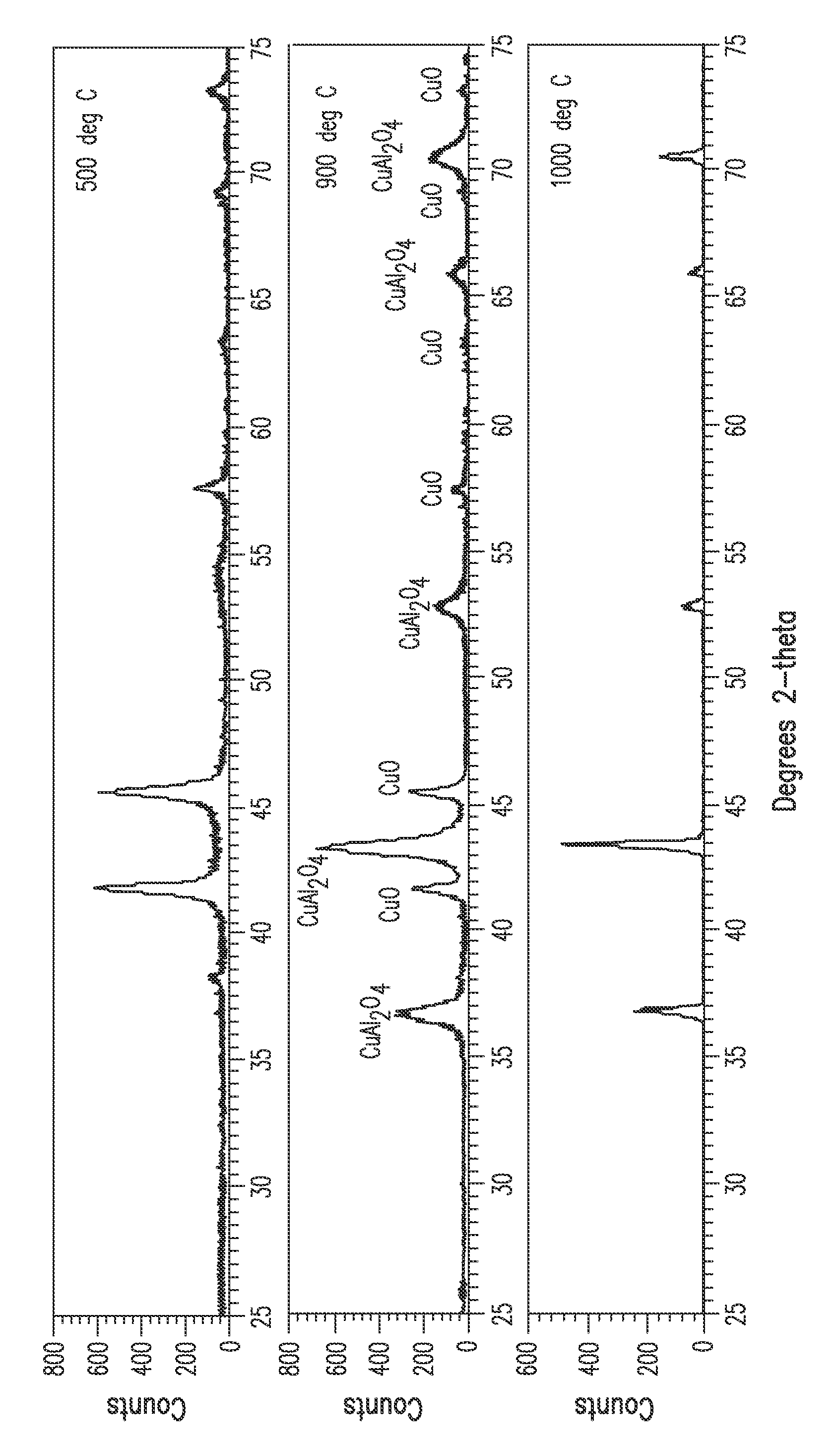Method for producing fine-grained particles
a technology of fine grains and metal oxides, applied in the preparation of alkaline-earth metal aluminates/aluminium-oxide/aluminium-hydroxide, nickel compounds, oxygen/ozone/oxide/hydroxide, etc., can solve the problem of difficult to make such fine-scale metal oxides, particularly multi-component (complex) metal oxides, and achieve high viscosity of liquids, simple, rapid and thorough mixing
- Summary
- Abstract
- Description
- Claims
- Application Information
AI Technical Summary
Benefits of technology
Problems solved by technology
Method used
Image
Examples
example 1
[0112]A complex metal oxide of formula La0.5Sr0.25Pd0.018Ni0.04Ti0.942Ox was produced as follows. This is an example of an essentially single-phase compound.
[0113]To make Ti-based nanoparticles, a method similar to known methods was used 45.24 g of titanium isopropoxide was mixed with acetic acid in a 4:1 isopropoxide:acetic acid molar ratio. This mixture was then added to approx. 150 mls of water and a white mass of agglomerated nanoparticles formed which was separated from the water by centrifuge. The nanoparticles produced by this method are thought to be approximately equiaxed particles around 3 nm diameter and consist of Ti, O and H.
[0114]A solution containing the other required elements was formed by mixing 40 mls of water, 10 g nitric acid, 34.84 g lanthanum nitrate hexahydrate, 8.51 g strontium nitrate, 0.76 g nickel carbonate, and 3.08 g of palladium nitrate solution (10%).
[0115]The titanium-based nanoparticles were added to the solution and stirred at about 50° C. The part...
example 2
[0117]A compound of nominal formula La0.8Sr0.2Pd0.024Ni0.04Ti0.936Ox plus 10% CeO2 was produced using similar methods to example 1, except the secondary heat treatment was carried out at 1000° C. This is an example of a complex compound with multiple different phases. XRD analysis showed the La0.5Sr0.25TiO3 phase as the main phase and the presence of several other phases. TEM showed the average grain size of this material to be about 40 nm.
example 3
[0118]A compound of nominal formula La0.8Sr0.2Pd0.03Ni0.04Cu0.03Ti0.9Ox plus 10% CeO2 was produced using similar methods to example 2. XRD analysis again showed the La0.5Sr0.25TiO3 phase as the main phase and the presence of several other phases. TEM showed the average grain size of this material to be about 40 nm
PUM
| Property | Measurement | Unit |
|---|---|---|
| pore sizes | aaaaa | aaaaa |
| grain sizes | aaaaa | aaaaa |
| diameters | aaaaa | aaaaa |
Abstract
Description
Claims
Application Information
 Login to View More
Login to View More - R&D
- Intellectual Property
- Life Sciences
- Materials
- Tech Scout
- Unparalleled Data Quality
- Higher Quality Content
- 60% Fewer Hallucinations
Browse by: Latest US Patents, China's latest patents, Technical Efficacy Thesaurus, Application Domain, Technology Topic, Popular Technical Reports.
© 2025 PatSnap. All rights reserved.Legal|Privacy policy|Modern Slavery Act Transparency Statement|Sitemap|About US| Contact US: help@patsnap.com


